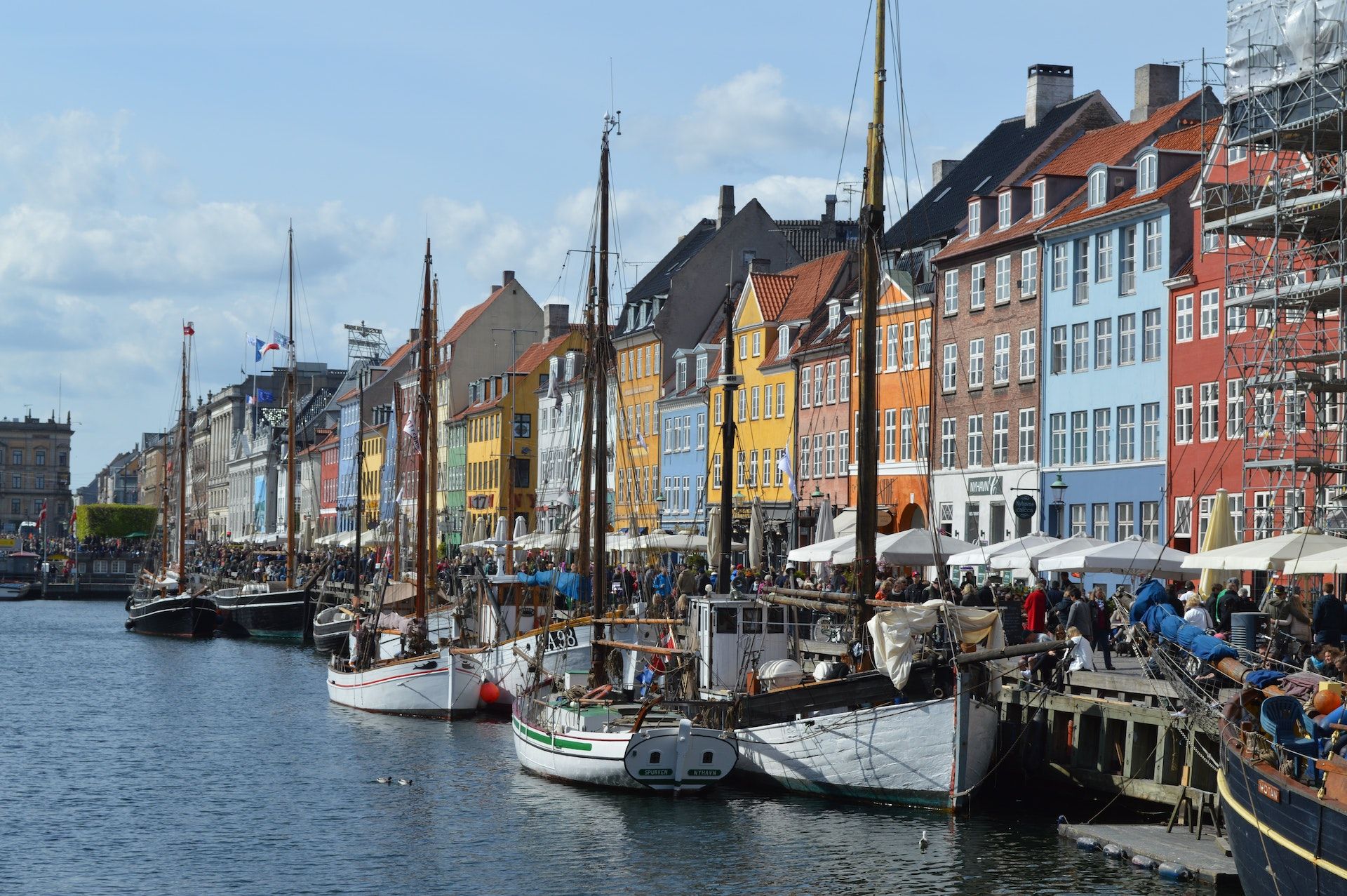Những mẹo thiết yếu giúp bạn lập kế hoạch cho chuyến đi đầu tiên đến Châu Âu
Lên kế hoạch cho hành trình và phương tiện di chuyển của bạn và giữ kết nối!
Bản tóm tắt
Châu Âu là một châu lục chứa đầy lịch sử phong phú, nền văn hóa đa dạng, cảnh quan tuyệt đẹp và một số địa danh mang tính biểu tượng nhất thế giới. Không có gì ngạc nhiên khi đây là điểm đến mơ ước của nhiều du khách. Nếu bạn đang lên kế hoạch cho chuyến đi đầu tiên đến Châu Âu, bạn sẽ có một trải nghiệm khó quên. Tuy nhiên, để tận dụng tối đa chuyến đi và đảm bảo chuyến đi suôn sẻ, điều cần thiết là phải chuẩn bị thật kỹ lưỡng. Trong bài đăng trên blog này, chúng tôi sẽ cung cấp cho bạn một số mẹo hữu ích để biến chuyến phiêu lưu đầu tiên của bạn ở Châu Âu trở thành một chuyến phiêu lưu đáng nhớ.

Lên kế hoạch cho hành trình của bạn: Nên ghé thăm bao nhiêu thành phố?
Châu Âu rộng lớn, và việc cố gắng khám phá mọi thứ trong một chuyến đi gần như là không thể. Thay vào đó, hãy tập trung vào một vài thành phố hoặc khu vực chính mà bạn quan tâm nhất. Bạn nên dành ít nhất 3 hoặc 4 ngày ở mỗi thành phố lớn để có cơ hội hiểu rõ hơn về nơi này. Nhớ tính đến thời gian di chuyển giữa các điểm đến khi lập kế hoạch hành trình của bạn!
Sau khi bạn đã quyết định một vài thành phố, hãy đảm bảo không nhồi nhét quá nhiều điểm tham quan và điểm thu hút trong khoảng thời gian ngắn đó. Bạn không muốn chỉ kiểm tra một danh sách dài các điểm tham quan phải xem, hoặc vội vã từ nơi này sang nơi khác chỉ để bạn có thể bao quát càng nhiều càng tốt — hãy dành thời gian để đắm mình vào văn hóa và các điểm tham quan.
Mặc dù tốt nhất là nên lập một hành trình sơ bộ, nhưng cũng tốt hơn nếu bạn giữ cho hành trình và kế hoạch của mình linh hoạt. Thực sự thích một địa điểm nào đó? Hãy thoải mái dành nhiều thời gian hơn ở đó so với dự định ban đầu của bạn. Hoặc nếu bạn chỉ đơn giản là không thể hòa hợp với một địa điểm, thì chắc chắn là không sao nếu bạn bỏ qua hoàn toàn hoặc rút ngắn thời gian ở đó. Hãy nhớ rằng, đó làcủa bạnkỳ nghỉ, và không ai có thể cho bạn biết cách tận hưởng kỳ nghỉ đó tốt nhất.
Mua vé máy bay: Bay đến và rời khỏi sân bay nào?
Bây giờ bạn đã biết những thành phố nào bạn muốn đến thăm, bạn sẽ phải quyết định một lộ trình hợp lý. Để tiết kiệm thời gian di chuyển, bạn nên sắp xếp các thành phố và quốc gia dựa trên khoảng cách. Sau đó, dựa trên lộ trình đã định, bạn có thể quyết định sân bay nào bạn muốn bay đến và sân bay nào bạn muốn bay đi.
Hãy nhớ rằng bạn không phải lúc nào cũng phải bay đến và rời khỏi cùng một sân bay.Vé mở hàmcó, nơi bạn có thể mua vé máy bay đến một sân bay, nhưng bay ra từ một sân bay khác. Vé máy bay giá rẻ có thể giúp bạn tiết kiệm cả thời gian di chuyển và chi phí đi lại, và mang lại cho bạn sự linh hoạt hơn nhiều ở các thành phố mà bạn muốn đến.

Du lịch Châu Âu: Tàu hỏa hay máy bay?
Hai trong những phương pháp phổ biến nhất để di chuyển giữa các quốc gia và thành phố ở châu Âu là đi máy bay hoặc sử dụng tàu EURail.
Để quyết định xem bạn muốn đi tàu hay máy bay, hai cân nhắc chính của bạn sẽ làthời gian đi lại Và chi phí đi lại.
Tàu hỏa so với máy bay: Thời gian di chuyển
Mặc dù thời gian di chuyển thực tế bằng máy bay đôi khi có thể ngắn hơn so với khi bạn đi tàu, bạn cũng nên tính đến một số thời gian bổ sung cần thiết nếu bạn đi máy bay: sân bay thường xa trung tâm thành phố hơn, trong khi nhà ga xe lửa thường nằm ngay trong trung tâm thành phố. Ngoài ra, hãy nhớ rằng khi đi máy bay, bạn thường sẽ cần đến sân bay sớm hơn để hoàn tất thủ tục làm thủ tục (khuyến nghị đến ít nhất 3 giờ trước giờ khởi hành theo lịch trình). Ghi nhớ những điều này, đi tàu đôi khi có thể tiết kiệm thời gian hơn so với đi máy bay.
Tàu hỏa so với máy bay: Chi phí đi lại
Có nhiều hãng hàng không giá rẻ ở Châu Âu, và có thể là phản trực giác khi đi máy bay đôi khi có thể rẻ hơn đi tàu hỏa. Vì vậy, ngoài việc chỉ so sánh thời gian di chuyển, bạn cũng có thể muốn xem xét các lựa chọn chuyến bay có sẵn trước khi quyết định lựa chọn phương tiện di chuyển của mình.
Bạn nên mang theo bao nhiêu tiền mặt?
Để xác định số tiền mặt bạn cần, hãy tìm hiểu xem liệu các thành phố bạn sẽ đến có chủ yếu vẫn dựa vào thanh toán bằng tiền mặt hay không hoặc liệu thẻ quốc tế có được chấp nhận rộng rãi hay không. Ở các thành phố lớn và các cửa hàng lớn, bạn không thực sự phải lo lắng quá nhiều về việc thẻ không được chấp nhận. Tuy nhiên, nếu bạn đang có kế hoạch đến thăm các thành phố nhỏ hơn hoặc nếu bạn sẽ đến thăm các chợ địa phương, thì bạn nên đảm bảo rằng mình có đủ tiền mặt.
Đặt ra một ngân sách sơ bộ cho các bữa ăn và mua sắm của bạn, và bạn sẽ có thể ước tính được số tiền mặt bạn có thể cần. Theo hướng dẫn, chúng tôi thường sẽ lập ngân sách khoảng 150 EUR mỗi ngày — nhưng hãy ghi nhớ thói quen chi tiêu của bạn khi lập ngân sách này.
Hầu hết các thành phố châu Âu chấp nhận Euro (EUR / €). Có một số thành phố/quốc gia cũng có tiền tệ địa phương, nhưng họ thường cũng chấp nhận EUR. Kiểm tra các loại tiền tệ khác nhau được sử dụng ở các thành phố mà bạn dự định đến thăm, cũng như tỷ giá hối đoái để giúp bạn quyết định số lượng EUR bạn muốn mang theo hoặc nếu bạn muốn sử dụng tiền tệ địa phương của họ thay thế.
Bạn cũng nên mang theo thẻ cho phép rút tiền quốc tế, phòng trường hợp bạn cần thêm tiền mặt.
Đọc và lưu ý
Để chuẩn bị cho chuyến đi đến Châu Âu, hãy chắc chắn rằng bạn đã đọc qua một số chuẩn mực văn hóa mà bạn nên lưu ý ở nhiều điểm đến khác nhau. Bên cạnh các chuẩn mực văn hóa, bạn cũng nên đọc qua một số mánh khóe và cạm bẫy phổ biến mà bọn móc túi có thể sử dụng. Đọc thêm về một số trò lừa đảo phổ biến diễn ra ở nhiều thành phố khác nhau.
Nhận thức được những trò lừa đảo và thủ đoạn phổ biến này sẽ hữu ích trong việc xác định một trò lừa đảo và thủ đoạn khi bạn đi du lịch. Hãy nhớ luôn cảnh giác và giữ đồ vật có giá trị của bạn an toàn và gần gũi với bạn khi bạn đi du lịch — đặc biệt là khi bạn đang khám phá các địa điểm du lịch nổi tiếng.

Giữ kết nối với một eSIM duy nhất
Khi bạn đi du lịch khắp Châu Âu, việc duy trì kết nối là điều cần thiết, dù là để giữ liên lạc với người thân ở nhà hay để truy cập bản đồ và các ứng dụng khác mà bạn có thể cần trong suốt chuyến đi.
Có một số tùy chọn giúp bạn duy trì kết nối, bao gồm cả việc mua một SIM địa phương cho mỗi quốc gia bạn đến hoặc kích hoạt chuyển vùng quốc tế. Tuy nhiên, mua một SIM địa phương cho mỗi quốc gia có nghĩa là bạn sẽ phải quản lý nhiều thẻ SIM và việc đổi thẻ SIM có thể khá phức tạp. Mặt khác, chuyển vùng quốc tế có thể dẫn đến chi phí khá cao.
Một lựa chọn tốt hơn để duy trì kết nối là sử dụng eSIM du lịch. eSIM là**SIM nhúng**và chúng hoạt động giống như SIM vật lý, ngoại trừ việc bạn không phải thay đổi thẻ SIM. Nó được nhúng trực tiếp vào thiết bị của bạn, mang đến cho bạn sự linh hoạt và tiện lợi hơn khi quản lý kết nối di động của mình.
Nhiều nhà cung cấp eSIM du lịch, bao gồm**Dân du mục**, cung cấp các gói eSIM cho nhiều quốc gia trên toàn cầu. Ngoài ra còn có các eSIM khu vực, cho phép bạn kết nối liền mạch chỉ với một eSIM duy nhất khi bạn khám phá nhiều thành phố khác nhau trong Châu Âu. Với eSIM khu vực, bạn chỉ cần cài đặt và kích hoạt cấu hình eSIM một lần và nó sẽ kết nối với đúng mạng khi bạn di chuyển giữa các quốc gia.
Bạn có thể mua eSIM trực tuyến không?
Có, bạn chắc chắn có thể. Bạn không cần phải đợi đến khi đến đích hoặc đến cửa hàng thực tế để mua eSIM.
Bạn có thể mua eSIM Nomad Europe trực tuyến tại**Cửa hàng trực tuyến Nomad**hoặc trên ứng dụng Android hoặc iOS. Sau khi bạn mua eSIM thành công, bạn sẽ nhận được email có hướng dẫn cài đặt và kích hoạt.Cài đặt eSIM của bạnyêu cầu bạn phải có kết nối internet ổn định, vì vậy bạn nênmua và cài đặt eSIM của bạn khi bạn vẫn ở nhàvới mạng internet ổn định. Việc cài đặt eSIM không có nghĩa là nó sẽ tự động được kích hoạt, do đó bạn không cần phải lo lắng về việc cài đặt eSIM khiến thời hạn sử dụng eSIM của bạn bị đếm ngược sớm.
Nhận eSIM Nomad Europe cho chuyến đi đến Châu Âu của bạn
Nomad có một số eSIM tốt nhất cho Châu Âu. Bên cạnh việc cung cấpeSIM cho hơn 45 quốc gia ở Châu Âuvới mức giá gần như địa phương, Nomad cũng cókế hoạch khu vực phù hợp với du khách có kế hoạch đến thăm nhiều quốc gia. Gói khu vực Châu Âu của Nomad bao gồm tới 35 quốc gia khác nhau ở Châu Âu, với mức giá cạnh tranh chỉ từ 1,25 đô la/GB. Các gói khác nhau về kích thước dữ liệu và thời lượng, và bạn sẽ có thể tìm thấy gói phù hợp với kế hoạch du lịch của mình!
Trong trường hợp bạn hết dữ liệu, bạn cũng có thể dễ dàng mua thêm trước khi gói cước của bạn hết hạn. Mua thêm sẽ thêm vào hạn mức dữ liệu của eSIM hiện tại của bạn và bạn sẽ không cần phải mua eSIM mới!